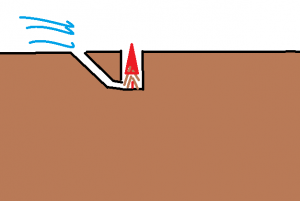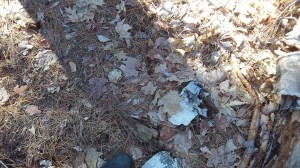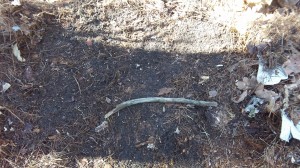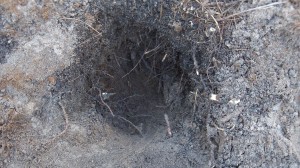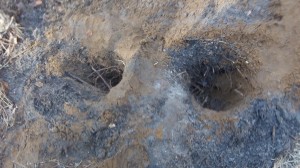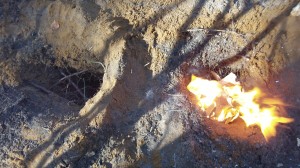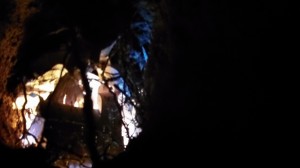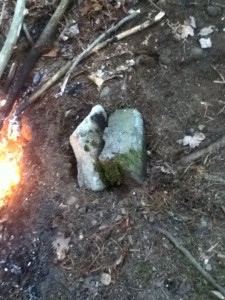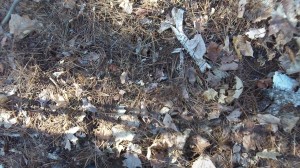The Dakota Fire Pit was first developed on the plains. It was used to hide fire, which could be seen for miles on the plains, burn with minimal smoke as it provides enough oxygen to prevent most smoke, and to burn in a manner that is incredibly efficient as fuel came scarcely on the plains.
While the Dakota Fire Pit is a bit more labor intensive than other fire methods, it will produce a warmer, more fuel efficient fire. This means that to cook on, less fuel will be required– meaning more wood saved for later and less time spent collecting fuel. This fire method is also useful for stealth camping as the flame is below ground, minimizing visibility of light.
Another advantage of the Dakota Fire Pit is that it is easy to cook on and if the pot is big enough, can be set directly over the fire. If not, this can be remedied with some cross beams quickly fashioned with a few sticks braced across the fire pit.
How the fire pit works is depicted in the diagram below. It helps to build the oxygen feeding hole in the direction of prevailing winds. The fire heats up, drawing in air, the 0xygen feeding hole is sloped to the base of the fire so that it will draft oxygen in, causing a warmer and more efficient flame.
Find a flat area where the fire will be made, preferably under some canopy cover so that any smoke coming off may be further diminished.
Clear the area of organic material so that the fire will be safe and not spread.
If a modern digging tool isn’t available, a stick may be used to greatly increase digging efficiency.
Dig out a hole that is about one foot deep and around one foot wide.
A secondary hole is dug about half a foot to one foot away from the fire pit. This hole is dug at an angle leading to the bottom of the fire pit. This hole allows for oxygen to feed into the bottom of the fire in the pit causing it to burn more efficiently. Tinder is built up in the hole on the right and then ignited.
This photo is from the oxygen hole. As you can see, it feeds into the very bottom of the fire pit so that the fire may draft oxygen and burn more efficiently.
If the wind is blowing too hard and is causing the fire to burn too rapidly, rocks may be used as a damper to slow the fueling of the fire by partially covering the feeder hole.
When it becomes time to move to the next camp, the fire site can be restored to its original state. The fire is extinguished properly and the dirt is filled back into the holes. The original debris is scattered over the site to rehabilitate it and hide the fire site.



